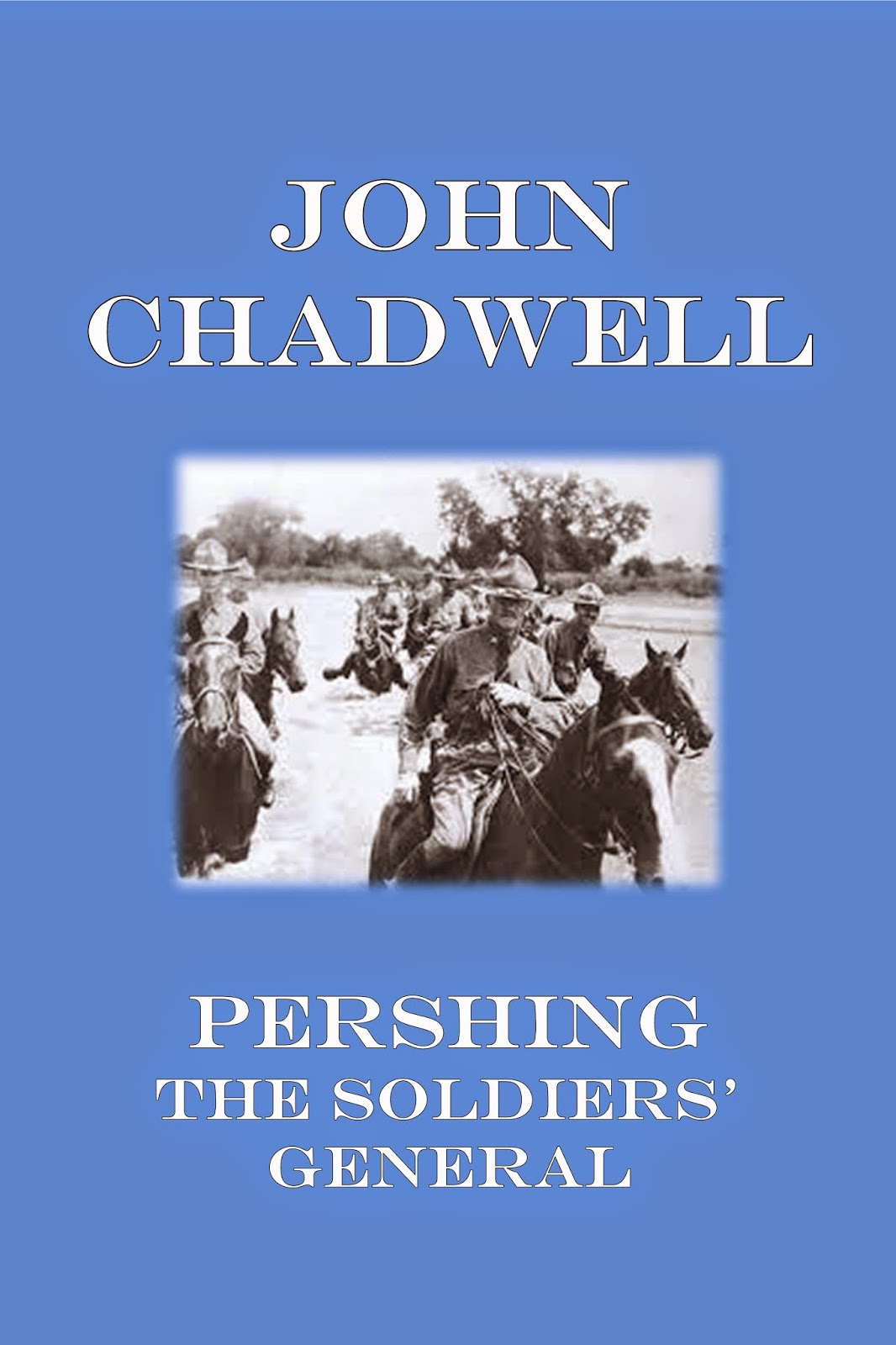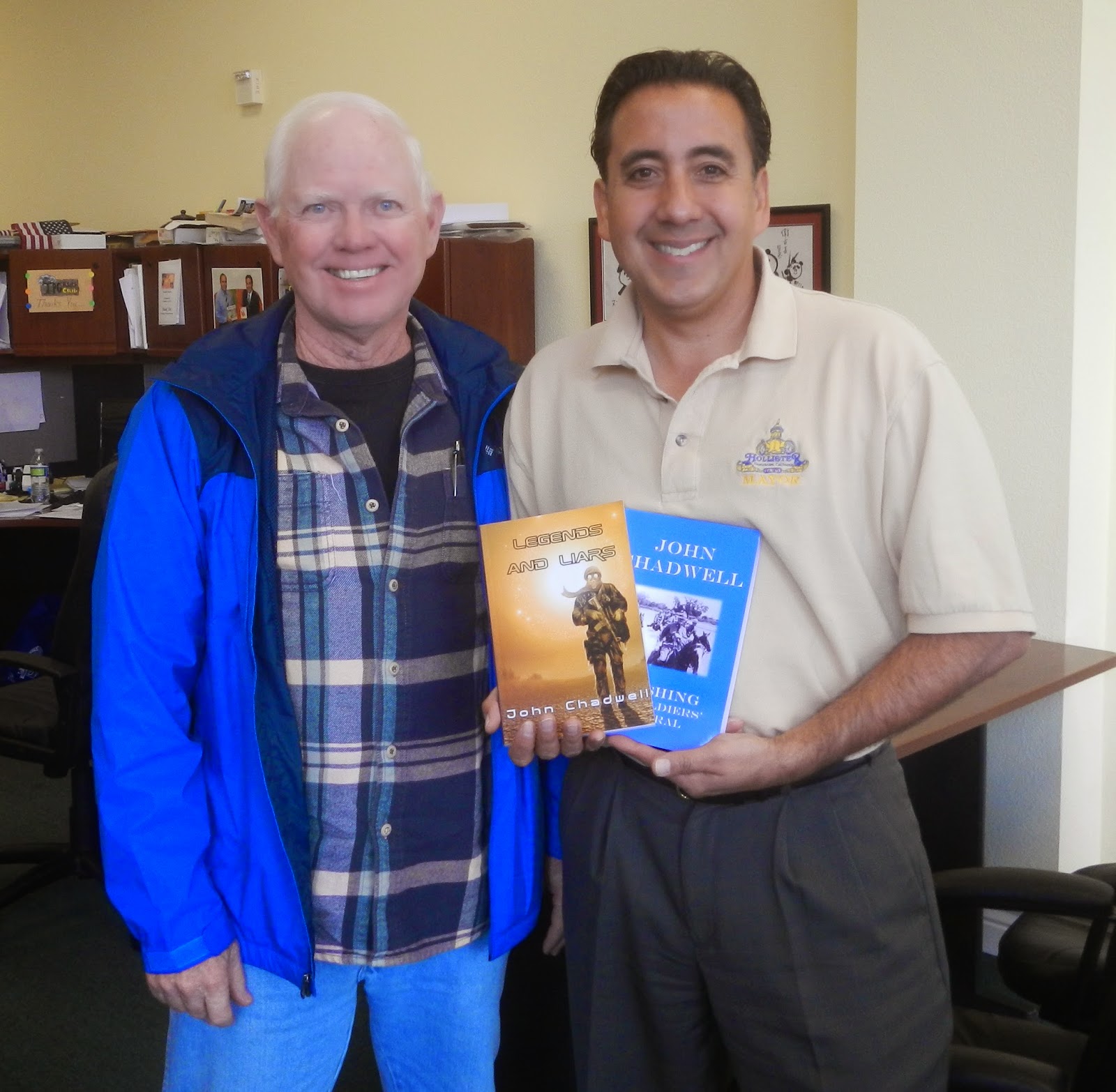What do you think would be your first thoughts if you woke
up one day and discovered that you had been murdered 150 years ago? That is
what local writer John Chadwell, 68, wondered when he decided to write about
famous lawman James Butler “Wild Bill” Hickok.
In his
seventh novel in four years, Chadwell wanted to write a futuristic western
where the man, better known as Wild Bill, is far from his natural element—1800s
Deadwood, South Dakota. In the novel, The
Kid and Wild Bill, Hickok wakes up in a laboratory in the year 2024, having
been cloned by a 17-year-old boy desperate for help from the one man who he
thinks can save himself and the President of the United States.
Chadwell
said the book evolved because of two technologies, the first being the
popularity of ebooks. “These days, I read most books on an iPad. I discovered
that I could download for free many books that were no longer under copyright,
such as those by Zane Grey, Jack London or Edgar Rice Burroughs,” he said.
“I’ve read a couple about Hickok and came to realize that he was one of the few
men who was bigger than life in his own lifetime. In the way newspapers
reported his exploits and from comments by people who actually knew him, he was
almost mythical. He was deadly accurate with any firearm and his luck was
phenomenal in that he survived so many gunfights and battles against men and
nature.”
The
second technology that led to Chadwell’s fascination in creating a story based
on Hickok is 3D printing of human organs and even an entire car. “I wanted to
bring Hickok into the future through some sort of cloning procedure based on
real science combining the power of quantum computing and DNA-based bio-printing,”
Chadwell said. “Cloning animals has already happened and now we’ve seen human
skin tissue and certain organs cloned. Cloning humans is still taboo, but I
thought in the future some nefarious organization might get into it to suit its
own purpose.
“Then I
wondered how Hickok would react if not only his body was cloned, but he woke up
with all his memories intact, which would also involve his emotions, including
missing his wife and friends, who have been dead over a century. So I came up
with the idea of a 4D bio-printer that not only regenerates the three
dimensions of height, width and depth, but memories.
“Cloning
Hickok with all his memories and skills intact into the 21st century
presents all types of moralistic and ethical issues. Suddenly, I not only found
that the kid was faced with the dilemma of having created a living being who
has his own agendas, but the cloned Hickok also comes with his own morality based
on 19th century code of behavior, which includes a strict sense of
right and wrong, with very few grey areas.”
What started
out as twist on the basic time-travel story, Chadwell said evolved into a
morality tale about cloning humans, the rights of clones, and even the debate
over whether clones have souls. “When I first started working on the book, I
didn’t expect it to go off in those directions,” he said. “I quickly discovered
the characters, particularly the kid, began questioning the rightness of the
cloning program that he and his father were involved in. And, with my own
church teachings, the questions of the soul popped up as if it were the kid’s
idea and not my own.
“That
is how I try to write. The characters become their own in a real sense and they
often go in directions I did not anticipate when I first began writing the
story. When that happens things get real exciting. You’re not just working from
an outline or a preconceived idea. The story has taken on a life of its own.”
Chadwell
has lived in Hollister, CA for twelve years and has worked as a reporter and
freelance writer. He spent twenty years in the Navy as a combat
photojournalist. One year, in particular, stands out as being the most
rewarding professionally and personally.
“For a number of years, the Navy
and Marine Corps sent journalists and photographers to the University of
Southern California to study filmmaking,” he said. “This may seem strange, but
the U.S. Government probably makes more documentaries and other types of films
than anyone, including Hollywood. After a year of graduate-level schooling, my
official military designation was as a motion picture scriptwriter, and for the
next four years I wrote and produced television news stories and documentaries,
as well as classified video briefings for the president and Joint Chiefs of
Staff.”
It was
while at USC that Chadwell became interested in writing what is known in the
film industry as spec scripts. “Through a very twisted trail of unanticipated
events I got the opportunity to rewrite a script for an independent producer,”
Chadwell said. “The movie came out in 1988, and is probably one of the worst science
fiction horror films ever made.
“After
that I wrote twenty or so spec scripts. Those are scripts that people write on
their own, with no producer or studio involved, that they then have to then go
out and try to sell. Along the way, I was also hired to do a couple of rewrites
that I actually got paid to do. Needless to say, I never quit my day job.
“Even
though Hollywood has not come calling yet, I have twenty good stories already
written as scripts. Instead of just letting them fade away in a virtual world
on my computer, I hopped on the self-publishing bandwagon through Amazon and
other companies. Using those scripts, which are essentially 120-page outlines,
I wrote my first book, Hunt of the Sea
Wolves in 2011. Four years later, I have seven books completed that are on
Amazon. I am already researching the eighth, which is not be based on a
script.”
If he
doesn’t get sidetracked by one of his thirteen other scripts, Chadwell plans to
explore the life of another of his favorite historical figures, Hannibal. “I’m
tentatively calling it Hannibal’s
Crossing,” he said. “I’m going to take a different approach than others who
have written about him. I’m going to tell his story through the eyes of a boy
who is pressed into service in Hannibal’s army as it wages war against Rome.
“I’ve
been thinking about this story for ten years, since reading Hannibal’s
biography. Deep inside Hannibal’s story is another story about a group of
people forced to fight. I found that a much more compelling angle on the
typical war story. I’ve been averaging a book every seven months or so, and I
plan on beginning writing this one by January.”

































